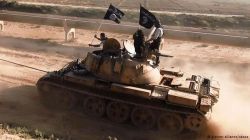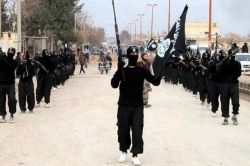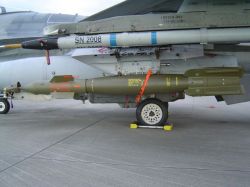Islamic State Uses Weapons, Ammunition Seized From Iraqi Army: Amnesty International

Poorly regulated arms flow and careless handling on the ground in Iraq for decades has led to Islamic State (IS) to get weapons, ammunition and equipment that were looted from the Iraqi army.
In a report by Amnesty International that draws expert analysis of thousands of videos and images, ‘Taking Stock: The arming of the IS’ catalogues how IS fighters are using arms, mainly looted from Iraqi military stocks, which were manufactured and designed in more than two dozen countries, including Russia, China the USA and EU states.
"The vast and varied weaponry being used by the armed group calling itself Islamic State is a textbook case of how reckless arms trading fuels atrocities on a massive scale," Patrick Wilcken, Researcher on Arms Control, Security Trade and Human Rights at Amnesty International said in the report published Tuesday.
“Poor regulation and lack of oversight of the immense arms flows into Iraq going back decades have given IS and other armed groups a bonanza of unprecedented access to firepower.”
After taking control of Mosul, Iraq’s second largest city, in June 2014, IS fighters acquired a windfall of internationally manufactured arms from Iraqi stockpiles. They included US-manufactured weapons and military vehicles, which they used to take control of other parts of the country, with devastating consequences for the civilian population in those areas.
The report documents IS use of arms and ammunition from at least 25 different countries, though a large proportion were originally sourced by the Iraqi military from the USA, Russia and former Soviet bloc states. These arms flows were funded variously by oil barter arrangements, Pentagon contracts and NATO donations. The bulk have been seized from or leaked out of Iraqi military stocks.
Among the advanced weaponry in the IS arsenal are man-portable air defence systems (MANPADS), guided anti-tank missiles and armoured fighting vehicles, as well as assault rifles like the Russian AK series and the US M16 and Bushmaster.
Most of the conventional weapons being used by IS fighters date from the 1970s to the 1990s, including pistols, handguns and other small arms, machine guns, anti-tank weapons, mortars and artillery. Soviet Union-era Kalashnikov-style rifles are commonplace, mainly from Russian and Chinese manufacturers.
“This shows again that arms export risk assessments and mitigation measures to unstable regions require a long term, root-and-branch analysis. This must include assessing if military and security units are capable of effectively controlling stockpiles and abide by international human rights and humanitarian standards,” said Patrick Wilcken.












